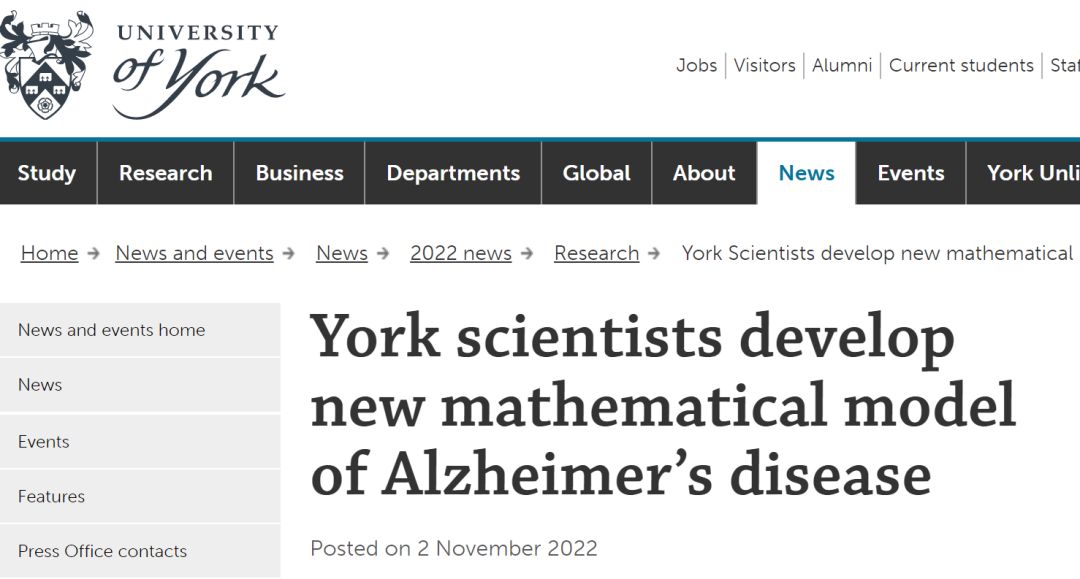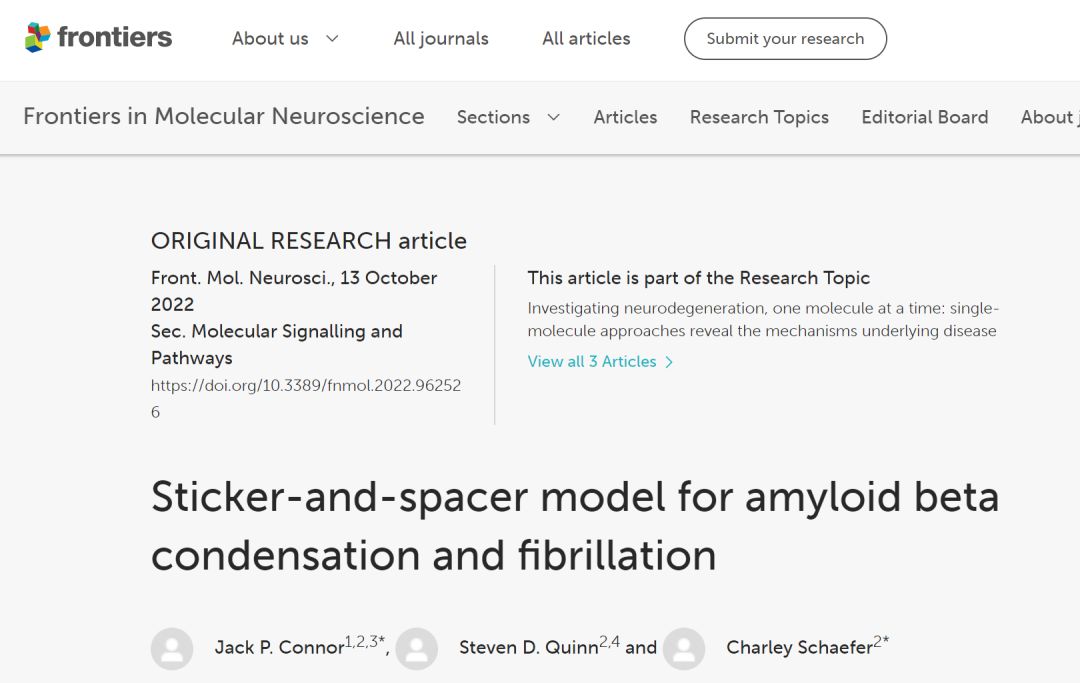Scientists have developed a new mathematical model of Alzheimer's disease
Published Time:
2023-01-10
Scientists have used a mathematical model to reveal how toxic proteins gather in the brain at the early stage of Alzheimer's disease. Researchers said that this discovery may have an important impact on future treatment.

Researchers from the School of Physics, Engineering and Technology of the University of York said that this discovery may have important significance for future treatment. The research was recently published in Frontiers in Molecular Neuroscience.

Research shows that a major protein related to Alzheimer's disease (amyloid protein) will condense into a droplet like object before forming an aggregation that affects normal brain activity.
Alzheimer's disease is the most common dementia. More than 50 million people worldwide suffer from this disease, which is expected to double by 2050.
At the nanoscale, toxic amyloid proteins in the brain gathered together about 10-15 years before the initial symptoms appeared, but the exact way of their aggregation is still unclear. By accurately understanding the formation process of protein clusters, scientists may more easily develop targeted drug therapies to block them.
Related News
Understanding Hose Assemblies for Medical Gas: Essential Knowledge for Healthcare Professionals
--- Hose assemblies for medical gas are vital components in healthcare settings, particularly in facilities where patient care relies on the accurate and safe delivery of gases such as oxygen, nitrous oxide, and medical air. These assemblies consist of a combination of hoses, fittings, and connectors designed to transport medical gases from storage tanks or supply systems directly to patients or m
Enhancing Patient Safety: How British Standard Gas Outlets Are Redefining Healthcare Standards
Enhancing Patient Safety: British Standard Gas Outlets Redefining Healthcare Standards Table of Contents 1. Introduction to British Standard Gas Outlets 2. The Importance of Patient Safety in Healthcare 3. How British Standard Gas Outlets Improve Patient Care 3.1. Technical Specifications of Gas Outlets 3.2. Compliance with Healthcare Regulations 4. The Role of Training in Ensuring Safe Usage 5. I
Understanding Medical Pressure Regulators: Essential Components for Safe Healthcare Delivery
Medical pressure regulators are vital components in the healthcare industry, particularly in settings where gases, such as oxygen and anesthesia, are administered to patients. These devices play a key role in ensuring that the pressure of medical gases is controlled and maintained at safe levels. Understanding how medical pressure regulators work and their significance can help healthcare professi
The Essential Guide to Medical Oxygen Flow Control Regulators: Ensuring Optimal Patient Care
Medical Oxygen Flow Control Regulators are critical devices used in the healthcare sector, specifically in environments where patients require supplemental oxygen. These regulators are designed to control the flow of oxygen from a central supply, such as a tank or an oxygen concentrator, to the patient. Proper oxygen delivery is essential for treating various medical conditions, including chronic
Essential Insights on Hose Assemblies for Medical Gas: An Overview
Hose assemblies for medical gas are vital components in the healthcare industry, particularly within the realm of rehabilitation equipment and medical devices. These assemblies are used to transport various medical gases, including oxygen, nitrous oxide, and compressed air, ensuring that patients receive the necessary gases for therapeutic and surgical procedures. The design of hose assemblies for
Ensuring Compliance in Healthcare: A Comprehensive Guide to British Standard Medical Gas Outlets
Ensuring Compliance in Healthcare: A Comprehensive Guide to British Standard Medical Gas Outlets Table of Contents Introduction to Medical Gas Outlets The Importance of Compliance in Healthcare Understanding British Standards for Medical Gas Outlets Types of Medical Gas Outlets Installation Requirements for Medical Gas Outlets Maintenance and Testing of Medical Gas Outlets











